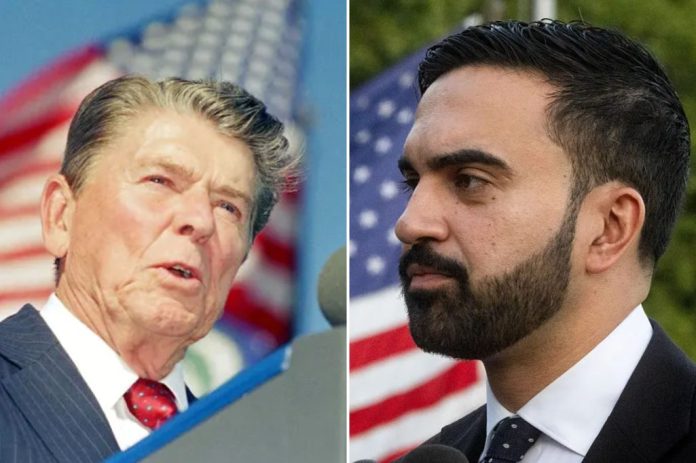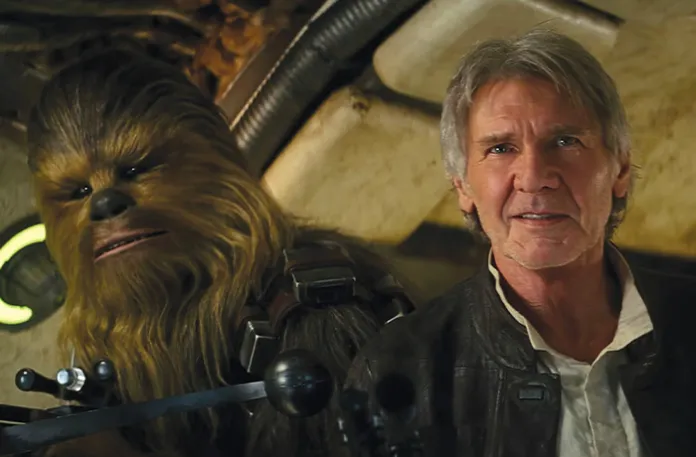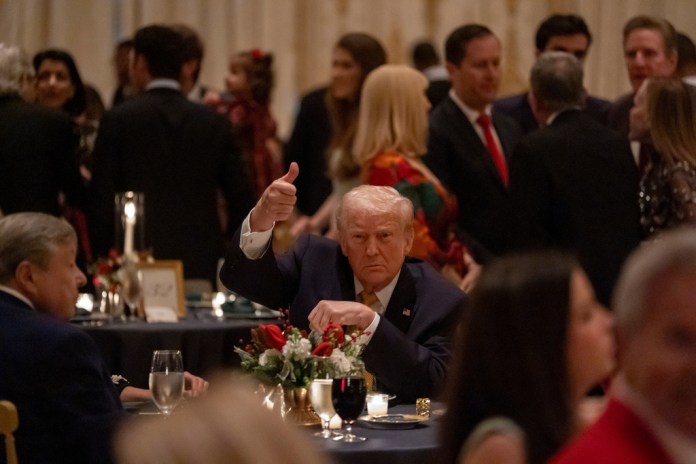Fifty years on, Nixon’s impact on the presidency and political landscape lives on – Washington Examiner
The article reflects on the enduring impact of Richard Nixon’s presidency, fifty years after his resignation on August 9, 1974. Despite the mixed evaluations of his legacy, it is agreed upon by political scholars and former aides that many aspects of the modern presidency and political landscape can be traced back to Nixon.
Speaking with experts, the article outlines how Nixon’s strategies helped shape the current Republican coalition by appealing to the “Silent Majority” and tapping into societal resentments regarding civil rights and anti-war movements. Historian Rick Perlstein argues that Nixon’s influence created the contemporary binary of American politics — the “red” versus “blue” divide. Political Science Professor Christopher Kelley agrees, suggesting that today’s Republican Party retains elements of Nixon’s coalition strategy.
Contrarily, former Nixon aide Bob Bostock counters this view, arguing that Nixon aimed to broaden his base rather than consistently solidify it, which is a contrast to contemporary political practices where both parties focus more on their bases than on expansion.
The article also draws parallels between Nixon and current political figures, notably Donald Trump, highlighting themes of anti-elitism and a sense of being besieged. However, Kelley notes a key difference in their outlook towards U.S. institutions, with Nixon showing respect for them while Trump exhibits skepticism.
Additionally, Nixon fundamentally changed the presidency’s power dynamics, shifting authority towards the executive branch in a polarized political climate. His administration marked a shift towards “presidential unilateralism,” allowing presidents to enact policies through executive actions rather than relying on Congress.
Nixon’s fraught relationship with the press also changed how future administrations interact with media, as he sought to circumvent negative national coverage by focusing on local outlets instead.
Nixon’s legacy is complex but undeniably influential, affecting the structure and strategies of both modern political parties and the executive’s role in governance.
Fifty years on, Nixon’s impact on the presidency and political landscape lives on
Former President Richard Nixon made history on Aug. 9, 1975, when he became the first and only United States president to resign.
His legacy has been complicated since then, marked by alternating periods of increased scrutiny and revision. One thing agreed upon by both his defenders and detractors is that much of the modern presidency and political landscape can be traced directly back to Nixon, for better or worse.
The Washington Examiner spoke with Miami University Political Science Professor Christopher Kelley and former Nixon special aide Bob Bostock for deeper insight into the former president’s legacy.
Nixon’s political model
One of the most ambitious views of Nixon’s impact comes from the left-wing historian Rick Perlstein’s book Nixonland: The Rise of a President and the Fracturing of America, which argues that the modern political landscape is the doing of Nixon.
“Richard Nixon, now, is long dead. But these sides have hardly changed,” Perlstein wrote in 2008, referring to the sides developed in 1972 as broadly identifying with or despising Nixon. “We now call them ‘red’ or ‘blue’ America, and whether one or the other wins the temporary allegiances of 50 percent plus one of the electorate — or 40% of the electorate, or 60% of the electorate — has been the narrative of every election since.”
In Perlstein’s view, Nixon formed the modern Republican coalition by tapping into growing resentments toward the Civil Rights, anti-Vietnam War, and hippie movements, rallying the “Silent Majority.” He appropriated the populist energy of the Democrats, mobilizing the Silent Majority against the so-called “elites,” a novel approach among Republicans when he ran in 1968.
Kelley largely agreed with Perlstein’s thesis, saying the Republican Party today can trace much of its origins to Nixon rather than its official founding in the 1850s.
“Even though the Grand Old Party originated in 1850s, this party is an echo of the Nixon Republican Party in ‘69,” he said. “The coalitions of voters that he put together, particularly white working class, non-college educated, certainly a connection with Evangelical religious communities. Nixon himself wedded with the Reverend Billy Graham and other evangelicals as a way to speak to the growing power of, particularly southern evangelicals in the Republican Party.”
Kelley also agreed with Perlstein’s thesis that Nixon was the major driver of a populist shift within the Republican Party toward a distrust of elites.
“Nixon was anti-elite. That is a strain more prominent in the Republican Party today, although you could argue it’s there in the Democratic Party as well, which is a reflection of populism, and the power of populism in the United States … but that focus … is on the white working class,” he said
Bostock disputed Perlstein’s characterization, especially suggestions that Nixon’s strategy was a cynical exploitation of the populace’s fears. He went so far as to question if Nixon had as major an effect on the current political space as suggested.
“I would say that’s tough because it’s so different,” he answered, when asked how much of today’s political foundation was the doing of Nixon, adding that he wasn’t “sure I could say that there’s anything that comes to mind” in today’s politics that was the direct result of the former president.
“Both parties … they spend more time solidifying their base than they do trying to broaden their base… whereas Nixon was always trying to broaden his base,” Bostock continued.
“And today, I just don’t … see that happening … it’s more like, ‘we’ve got to solidify our base and … do a better job getting our base out than the other guys do … that’s how we’re going to win…’ And I think that’s the major difference. I don’t think that’s from Nixon,” he argued.
Bostock also disputed the thesis that Nixon ran a campaign against the elites, tacking it as a mischaracterization of his position, despite ceding his personal dislike of many of those in the upper class.
“His coalition was a middle America coalition. You know, it’s the elites who have claimed that Nixon was running against the elites,” Bostock said. “But if you look at his speeches, and he’s not really talking about, we’ve got to throw the elites out. I mean, there wasn’t that kind of talk or that kind of rhetoric. In the ‘68 or the ‘72 campaign, and it certainly wasn’t in the ‘60 campaign, because he was the vice president … you know that you don’t get much more elite than that, right?”
Nixon as a proto-Trump
An unavoidable parallel between Nixon and today, Kelley argued, was that between Nixon and the current Republican presidential candidate.
“The two presidents, there clearly is a kind of pathos that’s there for both of them to feel that they’re beset upon, that there is a dangerous group of others that are there to destroy them, to use language that is coarse and harsh to really double down on the anti-elitism,” he said.
“For Nixon, it goes back to his days before he ever entered into politics, growing up in abject poverty, feeling that elites had carved out a place in the country that was exclusive and wouldn’t let anyone in, regardless of how well they did in their life,” he continued. “Even though Donald Trump doesn’t come from that sort of background, he certainly comes from outside American politics.”
The major difference between them, Kelley argued, was Nixon’s belief in U.S. institutions, contrasted with Trump’s skepticism.
Perlstein, a major critic of both Trump and Nixon, also draws parallels. However, he derisively said in an interview with journalist Dan Rather that Trump is a “tic-tac-toe” player, rather than the “chess player” that Nixon was.
Nixon and the Presidency
Nixon’s use of the presidency amounted to a revolutionary change of the institution, harkening to an era of a more powerful presidency than ever imagined by the Founding Fathers.
Kelley pointed to some precedents of presidents expanding the power of the office, such as presidents Thomas Jefferson, Andrew Jackson, and Abraham Lincoln. But it was Nixon who ushered in the age of cemented power within the executive branch, largely as an inevitability resulting from the polarization of the era, which made Congress ungovernable.
“It becomes really difficult for presidents to do much of anything with Congress, that is in keeping with the kinds of legislating presidents had historically been able to do with Congress,” Kelley said. “[Presidents have] got four years to try to convince the public to give them a second term, and they have to run on something. And if you can’t get Congress to do what you want them to do, then you have to figure out how to really expand executive powers to create policy to protect the institution, knowing that you know Congress isn’t going to come along with you, but you’re going to have to make the case.”
“And as a result, you begin to see a real rise, starting with Richard Nixon, going forward in what we call presidential unilateralism, and that is enacting policy solely through proclamations, executive orders, directives, and so forth,” he continued.
Bostock agreed that Nixon expanded the power of the presidency, and streamlined the process of managing staff.
Nixon’s main accomplishments are usually touted as his foreign policy victories, such as opening up China and detente with the Soviet Union. These accomplishments originated from the White House rather than the State Department, Bostock pointed out, beginning a trend that shifted power to the White House away from the State Department.
Nixon and the press
Another key change brought about by Nixon was the president’s relationship with the press. He had a particularly negative relationship with the national press, with the two harboring mutual hatred. To get around the negative coverage, Kelley said, Nixon went around them by having personnel go directly to local media.
“The Office of Communication’s job was to reach out to state and local media as a way of telling the President’s story, understanding that the national media just it wasn’t gonna, wasn’t helpful,” Kelley said. “The Office Communications, while it has expanded in what it does vis a vis communications, given the fact that our media system has changed, its whole DNA is still precisely what the Nixon administration had created it to be.”
The internet age saw this model adapted for the new informational sphere.
“One of the transformations that began in the George W. Bush administration was to begin reaching out to new media,” Kelley said. “You know, they were the first to bring bloggers into White House press conferences so that they could ask questions. And the Biden administration made a deliberate attempt to put influencers, new media influencers in touch with the White House, understanding that it’s not just the information that has changed, but new and emerging groups of voters, this is where they’re getting their information — YouTube, Tiktok, Snapchat.”
“If you don’t proactively engage with that system, it’s going to kill you,” he added.
" Conservative News Daily does not always share or support the views and opinions expressed here; they are just those of the writer."




